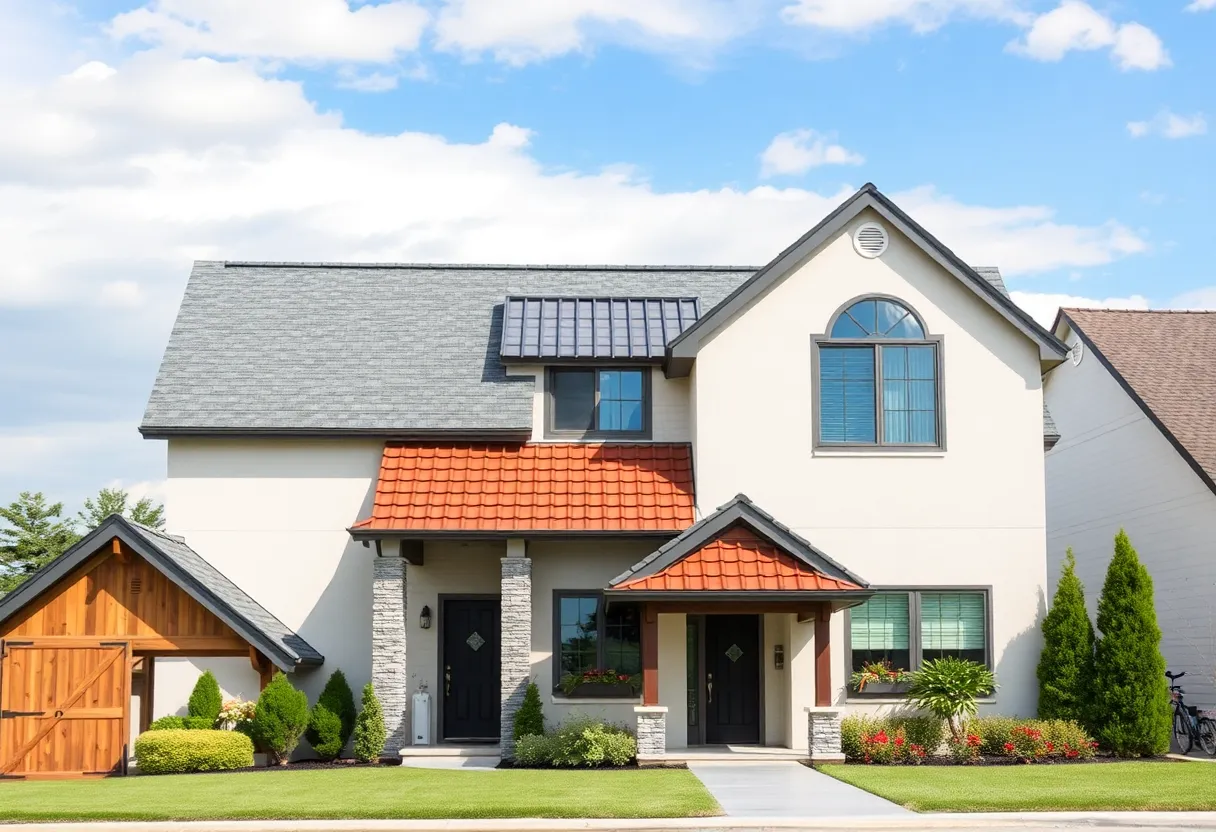How Do I Choose the Best Roofing System for My Budget?
Choosing the right roofing system is a crucial decision for homeowners and builders alike. A durable roof protects a property from the elements and contributes to its overall value. However, with a multitude of options available, selecting a roofing system within your budget can be challenging. This article will guide you through key considerations necessary for making an informed decision.
Understanding Your Budget
Before exploring roofing options, it is essential to define your budget clearly. Understanding your financial constraints will set the parameters for the choices you can realistically make.
Assessing Your Financial Situation
Analyze your income and savings. Determine how much you can allocate for roofing without compromising other financial obligations. Consider additional costs that may arise in the project, which can include:
- Removal of the old roof
- Labor costs
- Permits and inspections
- Potential repairs.
Setting a Realistic Budget
Plan a budget that includes both materials and labor. Setting a contingency amount—typically 10-20% of your total budget—will help cover unanticipated expenses.
Evaluating Roofing Material Options
Various roofing materials present distinct advantages and disadvantages. Choosing the right material can significantly impact both the longevity and cost of the roof.
Asphalt Shingles
Asphalt shingles are among the most popular roofing materials. They are relatively inexpensive and easy to install. However, their average lifespan is around 15-30 years.
Metal Roofing
Metal roofs are durable and energy-efficient, providing a lifespan of up to 50 years or more. While the initial investment is higher, they often save money in the long run through lower maintenance and energy costs.
Tile Roofing
Tile roofs offer a unique aesthetic and can last over 50 years. While expensive initially, they require minimal maintenance, potentially offsetting their higher upfront costs.
Wood Shingles
Wood shingles offer great insulation and can blend well with natural surroundings. However, their lifespan typically ranges from 20-30 years and can be higher-maintenance in terms of upkeep and cost.
Researching Installation Costs
Labor costs can vary significantly based on where you live and the complexity of the roof design. Always request multiple estimates from reputable roofing contractors.
Understanding Labor Rates
Typical labor rates can vary by region. In areas with a high cost of living, workers may charge more. In contrast, rural areas might have lower rates. Ensure you factor this into your budget.
Assessing Complexity
Consider the complexity of the roof layout. A simple gable roof may require less labor compared to a complex multi-level or mansard roof design, resulting in different costs.
Checking Warranties and Lifespans
Warranties offered by manufacturers can vary significantly. Evaluate both materials and labor warranties to understand what is covered.
Material Warranties
Material warranties can range from a few years to a lifetime, depending on the product. Investigate the terms carefully; some warranties may have specific conditions or maintenance requirements to keep them valid.
Labor Warranties
Ensure your contractor provides a warranty for their labor. This coverage typically lasts one to ten years and protects against installation defects.
Considering Energy Efficiency
Energy-efficient roofing systems can have a long-term financial impact. Roofs that reflect more sunlight reduce cooling costs in warmer months and may improve energy efficiency ratings.
Cool Roofs
Cool roofing materials reflect solar heat, contributing to energy savings. While the initial cost may be higher, the reduced energy bills can make these options financially appealing.
Insulation Types
Proper insulation works hand in hand with your roofing system. Evaluate insulation types like spray foam or fiberglass to maximize energy efficiency and minimize heating and cooling costs.
Local Climate Considerations
The local climate plays a significant role in your roofing material selection. Different materials perform better in various weather conditions.
Hot Climates
For areas with high heat, consider lightweight and reflective materials. Metal roofs or tile roofs can be beneficial in these conditions.
Cold and Snowy Environments
Regions that encounter snow require durable materials that handle weight. Asphalt or metal roofs with adequate pitch can prevent snow accumulation and damage.
Wind and Hurricane Areas
In hurricane-prone areas, opt for roofs designed to withstand extreme winds. Metal roofing and specially designed shingles are generally more resilient.
Environmental Impact
More homeowners are considering the environmental impact of their roofing choices. Sustainable materials can help reduce your carbon footprint.
Recyclable Materials
When possible, select roofing products made from recyclable materials. Metal roofing and certain types of synthetic shingles are often more environmentally friendly.
Energy Consumption
Assess the energy consumption associated with production. Some materials take more energy to manufacture than others, impacting their overall sustainability.
Evaluating Design and Curb Appeal
A roof not only serves a functional role but also contributes to the home’s aesthetics. Choosing a design that complements your property is essential.
Architectural Compatibility
Consider your home’s architectural style. A traditional property may benefit from asphalt shingles or tile, while a modern design might pair well with metal roofing.
Color Schemes
Color plays a crucial role in the curb appeal of your home. Light colors can provide a striking appearance while enhancing energy efficiency, whereas darker tones often provide a classic look.
Choosing a Reputable Contractor
Once you’ve selected a roofing system that meets your needs, the next step is finding a trustworthy contractor.
Researching Contractors
Request referrals from friends or family and check online reviews. Speak to multiple contractors to gauge their professionalism and expertise.
License and Insurance
Always verify that your chosen contractor carries proper licensing and insurance. This protects you from liability should accidents occur during the roofing project.
Conclusion
Choosing the best roofing system for your budget involves thorough research and consideration of various factors, including material options, installation costs, warranties, and climate conditions. By weighing these components carefully and selecting a reputable contractor, you can secure a roofing system that meets your financial and functional needs. The right roof not only provides protection but can also enhance your property’s value.
Author: HERE Greenwood
The GREENWOOD STAFF WRITER represents the experienced team at HEREGreenwood.com, your go-to source for actionable local news and information in Greenwood, Greenwood County, and beyond. Specializing in "news you can use," we cover essential topics like product reviews for personal and business needs, local business directories, politics, real estate trends, neighborhood insights, and state news affecting the area—with deep expertise drawn from years of dedicated reporting and strong community input, including local press releases and business updates. We deliver top reporting on high-value events such as the Festival of Flowers, Greenwood Community Theatre performances, and agricultural showcases at the Greenwood County Fairgrounds. Our coverage extends to key organizations like the Greenwood Chamber of Commerce and the Greater Greenwood United Ministry, plus leading businesses in manufacturing and healthcare that power the local economy such as FujiFilm Manufacturing and Self Regional Healthcare. As part of the broader HERE network, including HERECharleston.com, HEREColumbia.com, HEREGreenville.com, and HEREHiltonHead.com, we provide comprehensive, credible insights into South Carolina's dynamic landscape.




 Mays Contracting
Mays Contracting

